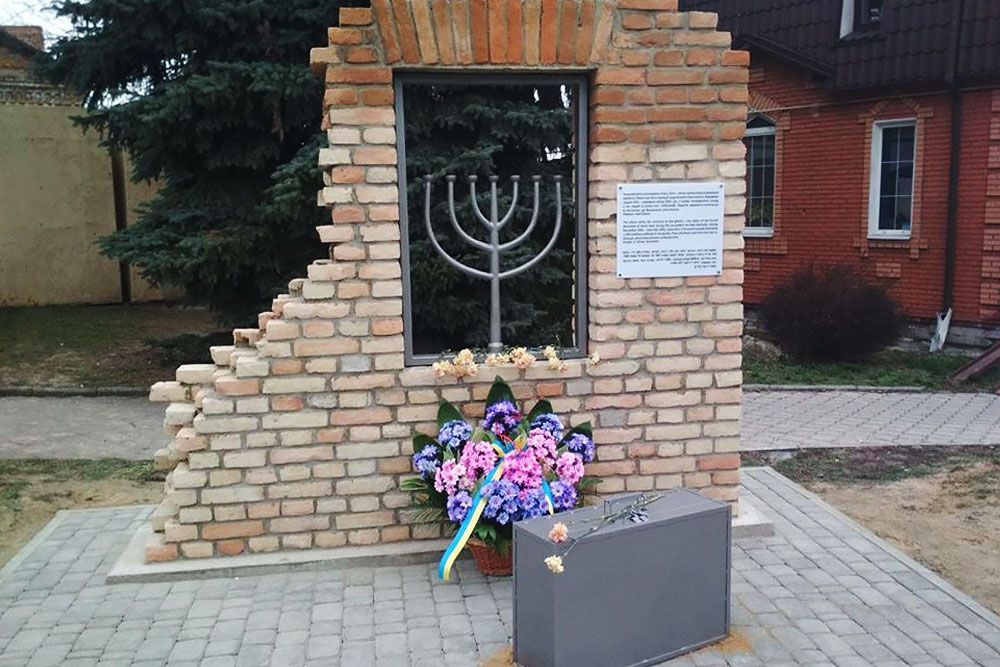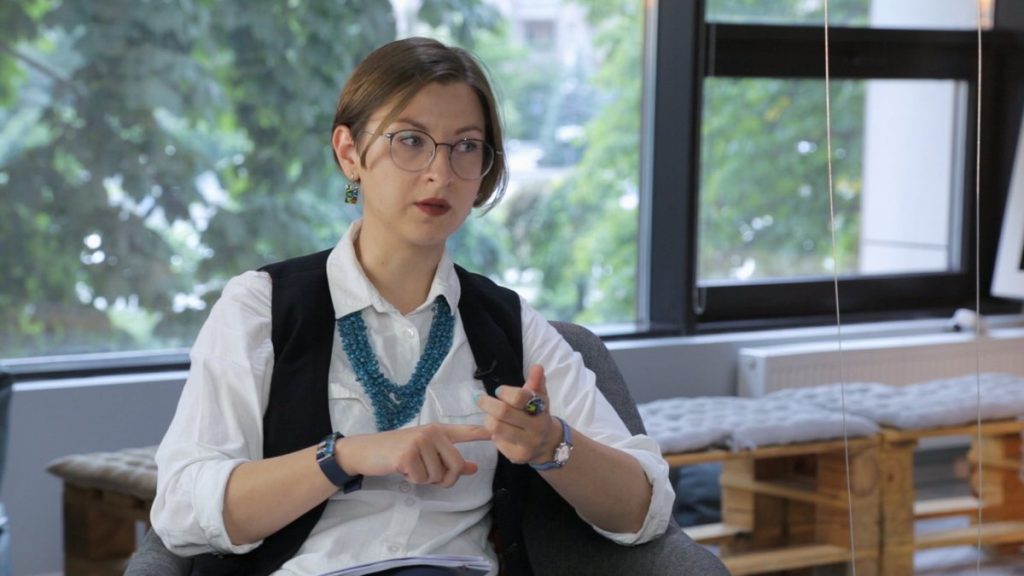"We wanted to show what cities had lost as a result of the Holocaust": Tetiana Vodotyka on the "MIK" journal's themed issue
[Editor's note: Russia's unprovoked and criminal war against Ukraine suspended the regular work of many organizations, reorienting their efforts. So it is with the Ukrainian Jewish Encounter. We are occasionally running interviews and articles done before the beginning of the war, which reflect the myriad of interests undertaken by Ukrainian journalists, scholars and writers.]
We talked about the new issue of MIKS, no. 9 (2) (2020), which is devoted entirely to the Holocaust: The Holocaust and the City: Spaces of Killing — Spaces of Destruction.
The special journal issue devoted to questions related to the Holocaust was discussed by Tetiana Vodotyka, editor-in-chief of the journal and Candidate of Historical Sciences, and Dr. Maksym Hon, director of the Mnemonica Center for Studies of Memory Policy and Public.
Tetiana Vodotyka: The journal MIKS [acronym formed from the Ukrainian words "Urban History, Culture, Society — trans.] constantly produces themed issues. We select a special theme and experts who specialize in one set of problems or another. Urban Studies and the study of questions related to the Holocaust seemed productive to us. The journal came out thanks to the support of the Ukrainian Jewish Encounter.
Maksym Hon: Our civic organization deals with questions related to the politics of memory. We are trying to make Ukrainian collective memory more inclusive, such that it will encompass the memory of various national, professional groups. Our most recent successful project is the installation, in the city of Rivne, of a commemorative marker in memory of the victims of the Rivne ghetto.

Vasyl Shandro: What are the contents of this journal issue? How is it structured?
Tetiana Vodotyka: The issue consists of two sections. The first section contains interviews. We spoke with Holocaust researchers who hold public positions: Yaroslav Hrytsak, Vitaliy Nakhmanovich, and Anatoly Podolsky. Some interviews touched on the problems of Babyn Yar and the situation that has unfolded around it at present.
The second section features academic research devoted to problems of the Holocaust and the memory of the Holocaust in the context of Urban Studies. The geographical span of the research is quite broad; we received articles from western Ukraine as well as from the south and the east.
We wanted to show the results of the research, the impact of the Holocaust, what cities lost as a result of the Holocaust, what the urban space represented for the victims — a chance to survive or the opposite — how memory of this tragedy is formed in the urban space. As it turned out, the Urban Studies framework is not so obvious, and we are the first [to do this] in fact.
Vasyl Shandro: Is research on the Holodomor and the Holocaust, for example, connected at least methodologically? To what extent can Holodomor researchers benefit from the achievements, techniques, and methodologies that Holocaust researchers possess? Is there a specific set of features governing research on the Holocaust on the territory of Ukraine?
Maksym Hon: The key to understanding the process lies in the theoretical plane. When the Holocaust and the Holodomor began to be researched in Ukraine, everything boiled down to recreating concrete events in a city, a town, or a village. This is called narrative; factual material that is gathered to an adequate extent. Now the task is to shift all this onto a methodological base and recognize these tragedies as components of a genocidal process. Today, most Ukrainian scholars who study the Holodomor are inclined to talk about events in a specific populated area. The themed issue that we have presented is an attempt to expand the way of seeing and reading concrete events. This task has proved to be not quite so simple for Ukrainian scholars. Interpreting some tragedy theoretically is much more complicated than recapitulating one subject or another. Research on the Holocaust in Ukraine has been taking place as long as research on the Holodomor, but in my opinion, we have drawn closer to understanding the problem only now.
Vasyl Shandro: Are urban spaces of memory in Ukraine marked somehow? Is there some sort of map? How does the memory of this live and function in Ukrainian cities?
Maksym Hon: This is an ambiguous question. In some cases, urban spaces have opened up in memory of Holocaust victims, for example, in Kyiv, Lviv, Rivne. In other cases, memorylessness remains, especially where small towns are concerned. In the best case, there may be some kind of commemorative marker, but in fact, it is most often cities that know practically nothing about the Holocaust, despite the fact that Jews constituted at least one-half of the population, and the very fact of its establishment must be part of the local myth.
There is no clear answer here. Some cities have opened up; in some places, the memory of Holocaust victims exists; elsewhere, it does not. I am more troubled by the fact that we are ignoring such a powerful potential as the names of the Righteous Among the Nations, after whom the streets where they carried out their feat of saving Jews or members of other nationalities should be named. At the present time, this is a resource that we are not using for some reason.
Tetiana Vodotyka: This should be a matter for the state: the return of memory and support for the memory of the Holocaust and its victims. This is an element of Ukraine's informational and state security.
Vasyl Shandro: To what extent has this theme penetrated the art space?
Maksym Hon: During the Soviet era, this topic was taboo. Starting in 1991, the topic of the Holocaust and the topic of the memory of Ukrainian Jewry entered the Ukrainian cultural space.
I remember when the word Holocaust was not known, and people did not talk about what had taken place on the territories of Ukraine or Europe. These changes and first beginnings, the first shoots that are in the art space, prove that Ukraine is open to this topic.
Vasyl Shandro: What is the geographical span of the research? How does the research look from the standpoint of quantity and quality?
Tetiana Vodotyka: It is logical that where there is a Holocaust research center, quantity passes into quality: Dnipro, Kyiv. In our research, Dnipro, Rivne, Kherson, Ostroh, and Lviv are represented.
Maksym Hon: Right now, theoretical constructs are much more important than attempts to recapitulate once again that set of facts, some new events. At the present time, I would not conduct a conversation about some concrete city. I would talk about the fact that this themed issue of MIKS is one of the harbingers of a theoretical breakthrough. In my opinion, this is important; this is a possible premium feature of this journal.
The key thing was not to recapitulate who was shot and how, what number of people were shot in a specific city, but to try to find new theoretical approaches for theoretical understanding.
Vasyl Shandro: How is the journal produced? Where can it be found?
Tetiana Vodotyka: The journal is published with the financial support of the Ukrainian Jewish Encounter. It is not for sale and will be disseminated for free at the launch that will take place in Kyiv in the fall. The texts are also available on the website.
Vasyl Shandro: If we are talking about acute topics of Ukrainian-Jewish relations, has this become the subject of scholarly debate?
Maksym Hon: Unfortunately, that has not happened yet. In the several dozen years of the Ukrainian state's existence, we have not ventured even once to get together for some serious conference and discuss the biggest minefield in Ukrainian-Jewish relations: collaboration and, generally, Ukrainian-Jewish relations during the Second World War.
Perhaps we are simply not ready for such a topic, but I am deeply convinced that once professional historians, rather than street-level people, start discussing this, we will achieve much more — and faster.
In Ukraine, people talk too little about the Righteous, yet this is precisely the bridge that can perform the function of mutual understanding. The feats of several thousand Ukrainians who, risking their own lives, saved Jews are precisely the bedrock for forming the basis of a conversation about complex issues.
This program is created with the support of Ukrainian Jewish Encounter (UJE), a Canadian charitable non-profit organization.
Originally appeared in Ukrainian (Hromadske Radio podcast) here.
Translated from the Ukrainian by Marta D. Olynyk.
NOTE: UJE does not necessarily endorse opinions expressed in articles and other materials published on its website and social media pages. Such materials are posted to promote discussion related to Ukrainian-Jewish interactions and relations. The website and social media pages will be places of information that reflect varied viewpoints.


















